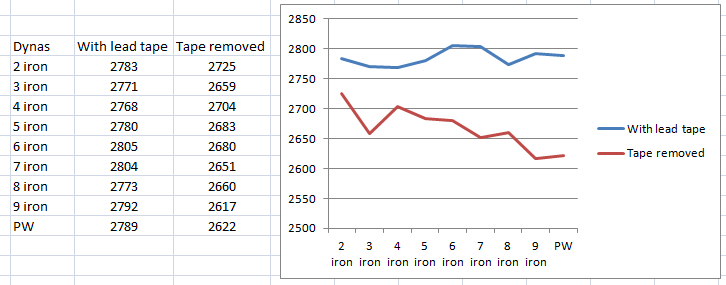The machine has a software program you can use to help determine it.
It has 3 methods one can use:
1. Assembled Club Method - This is for when you already have your set assembled. Here you input the data: Current Club’s MOI, the ‘target’ MOI, total weight and the length of the club. It will then tell you how much weight is needed. Obviously, you can add weight simply with lead tape. I’ve found that 1-gram = 10-12 points. This software is more for those using a hosel weight. I’ve found that the software works pretty well for the hosel weights. My 3, 4, 6 and 7 irons came out right on the money. My 5, 8 and 9-irons were about 1 gram too light. Still…I just added 1 gram of lead tape and I was now matched. I know the Wishon guys recommend 3/8" club length increments instead of the standard 1/2" increments in order to make MOI matching easier. However, that’s not mandatory. That’s probably why the 5, 8 and 9-irons were off by 1 gram…my clubs are at 1/2" increments.
2. Single Length Method - This is if you make your clubs all one length. As Wishon pointed out, Tommy Armour’s EQL irons were single length irons. The MOI matched. But, just because the MOI matches, doesn’t mean that it’s the best MOI for the golfer. Either way, I’ve never used this method.
- Component Method- This is if you have the components of the club and measure the MOI thru the ‘dry assembly’ method and you now want to determine how much weight to add. This requires you to input: Current Club’s MOI, the ‘target’ MOI, total weight and the length of the club. The only difference is you need to also input the balance point of the club as well. I plan on sending some irons heads to the Iron Factory soon to be re-chromed and I just want the re-chroming and the lie and lofts done (along with the ehad weights at a certain weights). When I get them back, I will install the shafts, but I will use the Component method to MOI Match the clubs. I will also use the 3/8" increment method to make the MOI matching easier.
3JACK
